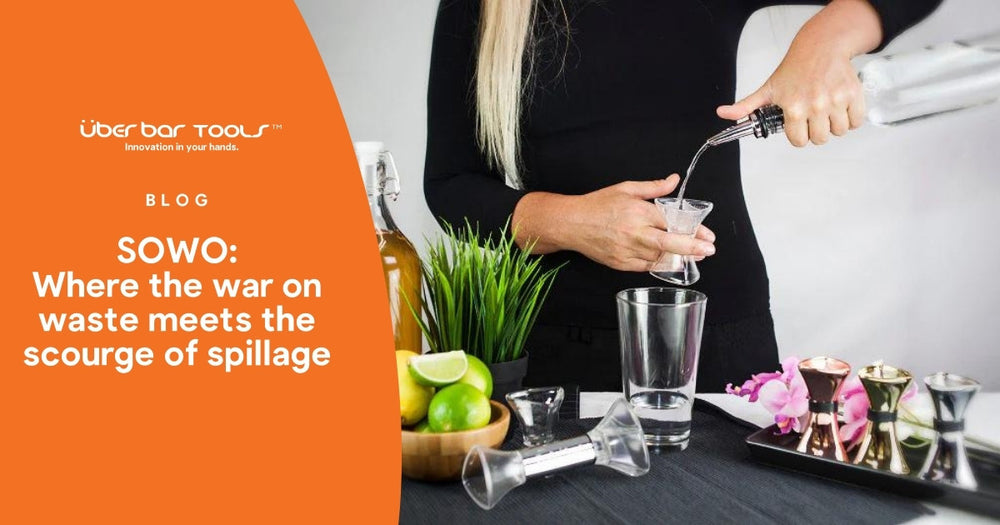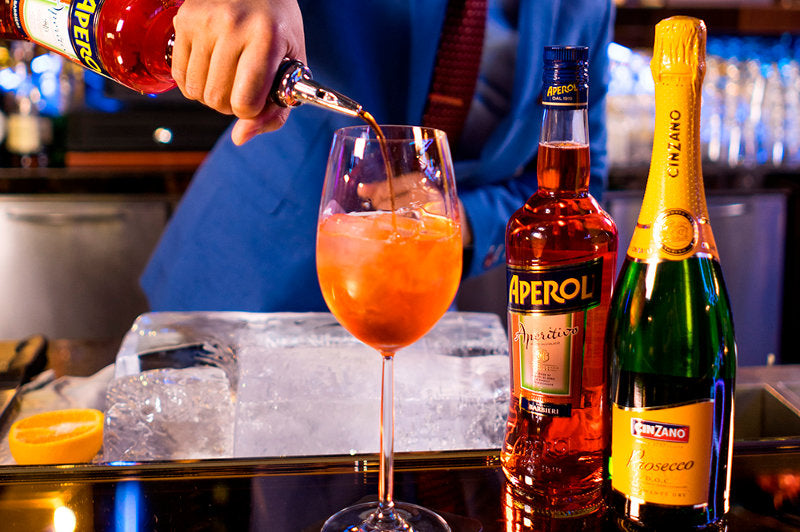
A busy night behind the bar brings plenty of challenges. Keeping the queues at bay and the customers happy is enough to give even the most hardened bartender the jigger jitters.
When time is of the essence, an inadvertent slip of the hand or bump of the bottle may seem low key but they all culminate in what we call SOWO - Spills, Over-pouring, Wastage, Ouch.
SOWO shows how all of these minor incidents could add up to be more costly to your business than you realise, which is something none of us have time for.
Spills
Often down to ‘flash over function', but sometimes it’s just about pure sloppiness. We’re all for the full customer experience but when it comes to flair, there’s a lot to be said for keeping things tight and slick. It’s fine if flair is your main game, but badly executed fancy moves are a sure-fire way to make a mess.
Sometimes staff might need a little more training or maybe they just need to slow down and take their time. Perhaps they need a guiding hand or they need to just take the showing off down a notch. Whatever the case, minimising spills is your first step in saving money.

Over-pouring
Over-pouring happens for a couple of reasons. Firstly, due to improper positioning when holding the bottle. If it is difficult to stop or control a pour, then the process is wrong or the tools are wrong. Better tools or increased bartender training will minimise the issue.
Secondly, what’s known as premature pouring. A jigger should be filled and then poured into the glass or shaker – this is a safe pour. However, sometimes bartenders have a habit of dumping the alcohol before the jigger is full and then continuing to free-pour into the vessel. This habit could be quite costly, as every ½ second of pouring time equates to 5mL (1/6oz) of extra alcohol being poured away for free!

“If you’d rather eliminate the guesswork, require your staff to use jiggers. Not only will this make your cocktails consistent, it will ensure bartenders aren’t over-pouring and driving up your costs,” says Bevspot.
Wastage
Spills and over-pour are two key signs of wastage, but they’re not the only ones. Did you know round jiggers can cause a meniscus, or bubble, to form on the top of a shot, which often goes to waste? Learn about the science behind the meniscus and start adopting alternative measuring tools or techniques so you can significantly reduce liquor waste.
Poor quality tools that break easily and sloppy stocktaking can also add to wastage. Find out more about spotting the signs of liquor wastage in your bar in our blog.

The ouch part
According to BackBar, an inventory and purchasing solution that helps bars and restaurants increase profits, "Shrinkage can be defined as when your bar loses inventory due to factors other than sales. This could include spillage, theft, human error, and of course overpouring."
In an average bar, spills, overpour and wastage accounts for a 3-5mL (1/10-1/6oz) loss on every 30mL (1oz) shot of alcohol served, multiply this by how many serves are poured daily and that’s a substantial volume of liquor forfeited every year.

While SOWO is often treated as a typical cost of running a bar for some high-performing businesses, to your average bar and pub, it's a cumbersome cost that's beginning to pile up and affect profitability, especially in these times of high inflation rate and economic challenges.
How to minimize spills, overpouring and waste in your bar
Mistakes happen at all levels, but recognising bad habits is the first step to stopping SOWO. Pinpointing the difference between an occasional misstep and a pattern of poor performance could make a real difference to your business. Minimizing SOWO from a bar comes down to your human resources, bar tools and best practices.
1. Implement bar training programs to your employees to keep best practices at the top of your team's minds. It's also important to revisit and reinforce practices on the topics of:
-
Free Pouring vs. Jiggered pouring:
Diageo Bar Academy doesn't recommend free pouring and highly encourages businesses to educate staff on the advantages of using bottle pourers and bar jiggers for consistent and accurate measurements. -
Care Instructions:
Educate bartenders on the proper use, handling and maintenance of bar tools to maximize their lifespan. Überbartools has care instructions for every product so you are properly guided. It's also equally important to teach them how to identify early signs of waste and tool malfunction so you can proactively mitigate bad habits and replace tools. -
Streamlined Bar Operation:
Implement standardized recipes or pre-measured ingredients to have better control and overview of liquor use.
2. Invest in quality bar tools that will prevent unnecessary waste, over-pour and spillages. Überbartools has a proven combination of innovative speed pourers and NMI-approved jiggers designed to reduce liquor spills, overpour and waste— the Perfect Pour System.

